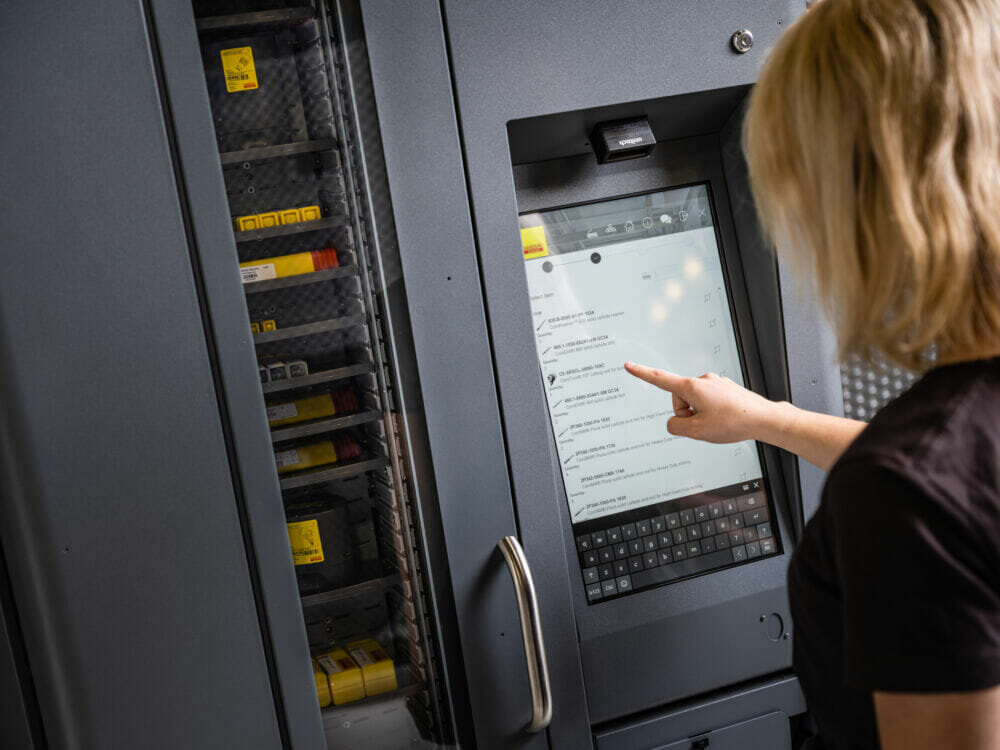Software helps manufacturers optimize tool inventories and profits
Productivity is the main goal for manufacturers and has knock-on effects for resources, operational efficiency and the bottom line. Despite this, a major cause of wasted time continues to be overlooked: poor inventory management. Having the right tool available at the right time is of critical importance for manufacturers. Here, Francis Richt, Global Manager for Sandvik Coromant’s Digital Machining Business explains how specialist tooling software can help manufacturers level-up their inventories and profits.
20% of operators’ time can be spent looking for tools in a typical workshop, while 15% of jobs are rescheduled or delayed because the right tools couldn’t be found. These findings, based on Sandvik Coromant’s research of its own customers, show the extent to which poor inventory management wastes time for manufacturers. Inadequate inventory management leads to accumulated high-value inventory levels, large volumes of stock becoming obsolete or stockouts, which means the inventory is depleted when a certain tool is needed the most. Other effects include difficulties in measuring tool performance, and higher costs for stock management and processing orders.
A sector so concerned with time, manufacturing, shouldn’t be wasting so much of it looking for tools and spare parts. So, where are manufacturers going wrong with inventory management? One problem is that tool management and tool vending systems remain siloed within many organizations. Also, these companies rely on human workers to inspect and replenish their tool cabinets. Many manufacturers are reluctant to embrace digitalization because they are unsure how Industry 4.0 can fit into their established working processes — like enterprise resource planning (ERP), supervisory control and data acquisition (SCADA) and manufacturing execution systems (MES) — and achieve the buy-in of workers on the shop floor.
Sandvik Coromant has set itself a goal to change this within the next five years — but how? By helping customers automate their inventory management through software. In doing so, they can solve issues of poor inventory management in ways that overcome their reluctance to go digital and benefit the bottom line.
Faster production times
In its Digital Factories 2020: Shaping the future of manufacturing report published last year, Pricewaterhouse Coopers (PwC) observed that, “the full effect of digitalisation is only realised when companies are connected in real-time to their key suppliers and critical customers.” In particular, they are achieving this by using Industry 4.0 devices like sensors on production and assembly lines to capture datain real-time for improved analytical capabilities and empowered decision-making. As with supply chain management, this ethos of better data capturecan also be applied to managing inventories.
But, it’s a challenge because inventory management has many different facets. They include monitoring inventory levels and knowing when new tools need to be ordered, to ensure production is never at a stand-still. One example cited in PwC’s report is Fujitsu’s plant in Augsburg, Germany, which uses automated shelf-life monitoring to optimize its inventory levels and prevent stockouts. According to the report, the facility has “an interim storage facility (its “supermarket”) and self-driving electric vehicles that are integrated into its MES in order to ensure a “just in sequence” delivery of components.”
In this case, digitalized inventory management does more than save the company’s time, it supports faster production times. Better inventory management isn’t exclusive to large multinationals like Fujitsu. With software, smaller or mid-sized manufacturers can also automate their own multi-faceted inventory management processes.
Adding value to processes
There have been a lot of vending logistics methods that are free to implement, but many don’t actually add value to the process. Instead, Sandvik Coromant’s CoroPlus® Tool Supply is designed to add value, by driving automation with higher efficiency and sustainability enabled by data and insights.
CoroPlus® Tool Supply brings together hardware — specifically, tool storage — and software. The customer is supplied with a purpose-made tool vending cabinet with drawer system which combines with a powerful software platform. This is accessible through a PC or tablet. The automation software gives manufacturers an alternative to doing everything manually, and can avoid incurring a time cost when there’s little time to spare. CoroPlus® Tool Supply is also designed to manage the many facets of inventory management, such as monitoring levels of inventory while another feature is automating the tool purchasing.
A major value-add of the CoroPlus® Tool Supply software is its automated tool purchasing feature. With it, a human worker that manually tracks the contents of a tool cabinet can rely on CoroPlus® Tool Supply to automatically order and fill-up that tool stock. The software allows workers to pick and return tools from the shop floor and supports with the management of restocking and ongoing maintenance of the inventory — all in real-time.
In other words, humans and software can work together seamlessly. But, how can software address manufacturers’ reluctance to go digital?
Make better decisions
Another benefit of CoroPlus® Tool Supply is its Role-Based User Interfaces (RBUI). RBUIs also happen to be the latest trend in ERP software, allowing workers who repeatedly perform the same tasks to access their frequently-used applications more easily. This can be crucial to winning workers’ buy-in on the shop floor. The CoroPlus® Tool Supply platform includes connectivity cutting tool data through the CoroPlus offer. This connects with multiple suppliers’ product databases and allows the import of correct tool information, including ISO parameters, bills of material and spare parts. Along with the CoroPlus Tool Supply software, Sandvik Coromant can also provide the cabinets that hold the tools.
Our specialists see automation as being integral to improving efficiency and sustainability for our customers. After all, a core aspect of sustainability, especially energy efficiency, is being able to analyze and predict the use of resources including the tool inventory. While Industry 4.0 is benefitting sustainability on the production line with sensors and so on, CoroPlus® Tool Supply can do the same with inventories to ensure they are used with time-, cost- and energy-efficiency.
In fact, over the coming years, we envisage software like CoroPlus® Tool Supply becoming more integral to the decision-making across the whole manufacturing process. One example is that, when planning to machine a new component, the software helps you decide which tool to use. Another scenario is the software is more connected to the machine and the scope of work. Let’s say you plan to machine 50 or 100 components: do you have enough tools, will they wear out or can you complete your work with your existing inventory of tools?
We predict that this kind of automation will definitely happen in the coming years. But, today, manufacturers can already use software to ensure productivity is their main goal.





